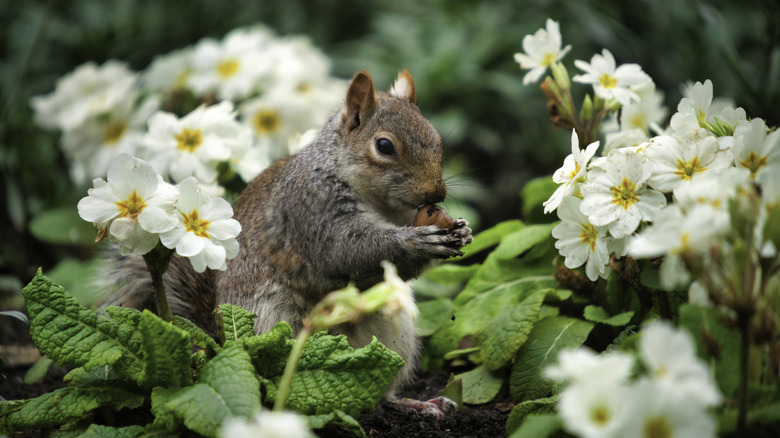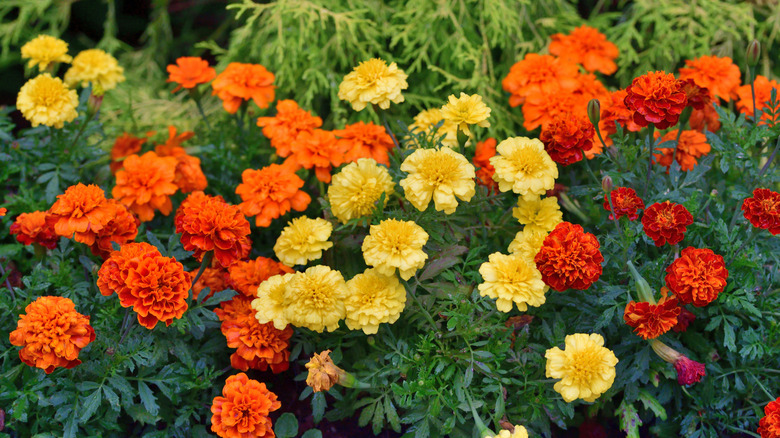Shield Your Garden From Squirrel Damage With A Flower You Can Easily Grow From Seed
Squirrels may be fun to watch, but gardeners know how quickly they can turn destructive. They dig up bulbs, bite into ripening fruit, raid vegetable beds, and leave behind a trail of half-eaten plants. While there's no guaranteed way to keep squirrels completely out of the garden, some gardeners turn to marigolds as a potential line of defense.
Marigolds produce a strong, musky scent that squirrels may find unpleasant. Their sensitive noses rely heavily on scent to locate food, and the bold aroma of marigolds might help mask the smell of nearby bulbs, fruits, and vegetables that squirrels typically target. In theory, this could make it harder for squirrels to zero in on the plants they're after, helping to discourage digging and snacking. Beyond their possible deterrent effects, marigolds offer plenty of upsides in the garden. They're easy to grow and safe to plant around pets and children.
You can grow them along garden borders, tucked into raised beds, or planted in containers near edible crops. In companion planting, they may serve as a fragrant barrier, surrounding more vulnerable plants while adding bright orange and gold color to the garden. While marigolds as a pest control may not be effective for a serious squirrel problem, they offer an affordable, low-maintenance option that might help limit minor garden damage. For bigger infestations, it's always best to consult a professional for more reliable control.
How to grow marigolds from seed for squirrel protection
Marigolds are not only affordable to grow, but starting them from seed is surprisingly simple — even a single packet can fill your garden with flowers for just a few dollars. Since they are hardy in USDA Hardiness Zones 2 through 11, they can be grown almost anywhere in the U.S. In most parts, it's best to wait until after your last spring frost to sow marigold seeds outdoors. Once the soil has warmed to around 65 to 70 degrees Fahrenheit, the seeds should germinate quickly.
If you want to get a head start, you can also grow marigolds indoors. Plant seeds six to eight weeks before your area's expected frost-free date, then transplant the young plants outside when the weather warms up. Marigolds thrive in full sun, needing at least six hours of light each day. They prefer well-draining soil but aren't too picky and can handle average garden conditions without much fuss. Sow the seeds about ¼ of an inch deep, and keep the soil lightly moist until seedlings appear, often within one to two weeks.
After they've settled in, marigolds don't require much attention. Water regularly at first, but mature plants can tolerate brief dry spells. To boost squirrel protection even more, you could try to pair marigolds with other plants that squirrels may dislike, such as mint or nasturtiums, producing a mix of scents that may help keep the curious rodents away. But note that most varieties are annuals, not perennials, so you may need to plant them again next year unless they self-seed.

